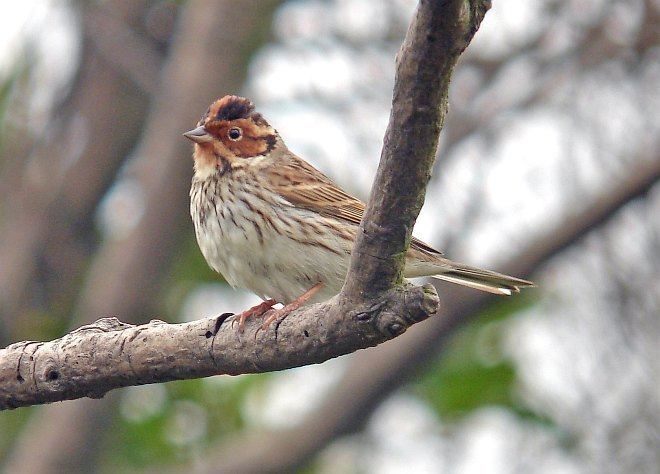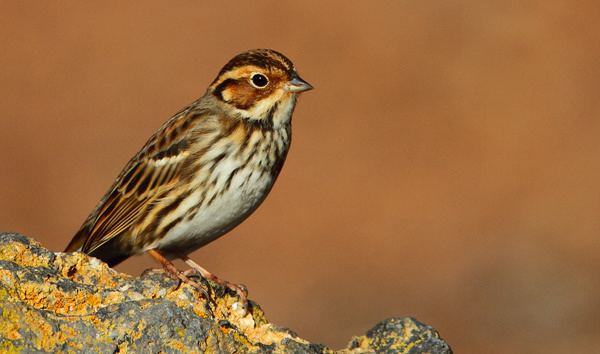Order Passeriformes Genus Emberiza Higher classification Emberiza | Phylum Chordata Family Emberizidae Scientific name Emberiza pusilla Rank Species | |
 | ||
Similar Bird, Rustic bunting, Emberiza, Pine bunting, Yellow‑breasted bunting | ||
Little bunting oxonbirding blogspot co uk
The little bunting (Emberiza pusilla) is a passerine bird belonging to the bunting and American sparrow family (Emberizidae), a group most modern authors separate from the true finches (Fringillidae).
Contents
- Little bunting oxonbirding blogspot co uk
- Little bunting dwerggors
- Taxonomy
- Description
- Ecology
- References

Little bunting dwerggors
Taxonomy

First described by Peter Simon Pallas in 1776, the little bunting is a monotypic species, with no geographical variation across its extensive Eurasian range.

The genus name Emberiza is from Old German Embritz, a bunting. The specific pusilla is Latin for "very small".
Description

This is a small bunting, measuring only 12–14 cm (4.7–5.5 in) in length. It has a heavily streaked brown back and white underparts with fine dark streaking. With its chestnut face and white malar stripe, it resembles a small female reed bunting, but has black crown stripes, a white eye-ring, and a fine dark border to the rear of its chestnut cheeks. The sexes are similar.
The call is a distinctive zik, and the song is a rolling siroo-sir-sir-siroo.
Ecology

The little bunting breeds across the taiga of the far north-east of Europe and northern Asia. It is migratory, wintering in the subtropics in northern India, southern China and the northern parts of south-east Asia. The birds remain in their winter quarters for quite long; specimens were taken in Yunnan in late March. It is a rare vagrant to western Europe. This species is adaptable; in the mountains of Bhutan for example, where small numbers winter, it is typically found in an agricultural habitat, mostly between 1,000 and 2,000 metres (3,300 and 6,600 ft) ASL.
It breeds in open coniferous woodland, often with some birch or willow. Four to six eggs are laid in a tree nest. Its natural food consists of seeds, or when feeding young, insects.
A common and widely-ranging species, it is not considered threatened on the IUCN Red List.
